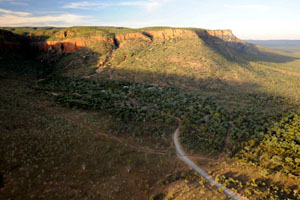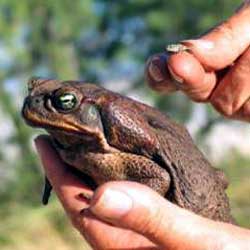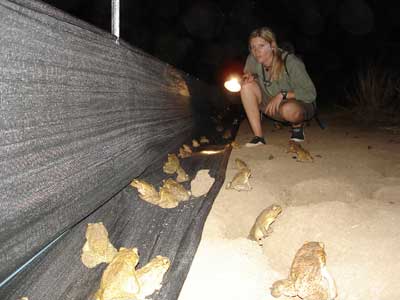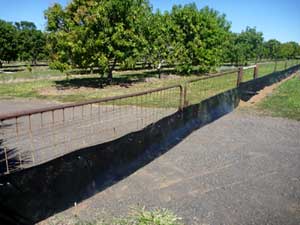

Get your Stop The Toad
bumper sticker here ..

Web Masters:
Use this button to
link back to this site.

THE END OF AN ERA - February 2015 |
||
| STTF now stands at the end of our ninth and final year of operations. The Committee of Management has decided to close the Foundation. The main reason is lack of funding and governmental support, but also a change in the direction of the Foundation from manual control to supporting scientific research. Remaining resources will be divided between scientists (see Project Kimberley) and environment organisations who will continue the fight against the toad using the experience gained by STTF. STTF believe we have been very successful at increasing the awareness for the cane toad issue in northern Australia over the past nine years, one of the main aims of the Foundation. We were also responsible for removing thousands of cane toads from the environment and developing and testing successful control methods in the field. We hope that the experience and knowledge gained during the nine years we were in operation will be utilised by other organisations that are able to continue to work on the cane toad issue in Australia. STTF would like to say a huge thank you to all our stakeholders and everyone who supported our work throughout the history of the Foundation. It was a pleasure working with you. STTF would like to say a final and most grateful thank you to all the volunteers over the past nine years. We simply could not have given it our best shot without you. Your hard work, blood, sweat and tears were all worth it and will always be part of the fight against the invasive cane toad. Thankyou! If you would like more information on the cane toad issue or to see if there are any volunteer opportunities available, please contact our sister organisation Frogwatch at www.frogwatch.org.au
Please note: This website captures the story of the Stop the Toad Foundation from 2006-2015. Some of the website will not be up to date and it may read as if the organisation is still operating.
|
Given the above news this competition is no longer available, but please peruse this archived site out of historical interest.
To show their support of the cause, Wicked campers has designed a Stop the Toad camper van which can be hired out across Australia and encourages travelers to ‘spread love, not cane toads’ and to ‘save our aussie icons’. If you are lucky enough to spot the Toad camper van as it travels
around Australia, send us a photo with yourself and the van for
our web page. For more information about hiring a Wicked Camper,
please contact Wicked Campers on
|
The spread of the toad
|
Supported by |
 |
Web Manager: Dave Graham - Web hosting & scripts: Alex Varlakov http://ozup.com/ |











 If
you already have a fence surrounding your property, it is easy to
make it toad proof to protect your pets and native wildlife. Smaller
fences can also be used within your property to keep toads out of
specific areas such as swimming pools and BBQ areas
If
you already have a fence surrounding your property, it is easy to
make it toad proof to protect your pets and native wildlife. Smaller
fences can also be used within your property to keep toads out of
specific areas such as swimming pools and BBQ areas
















